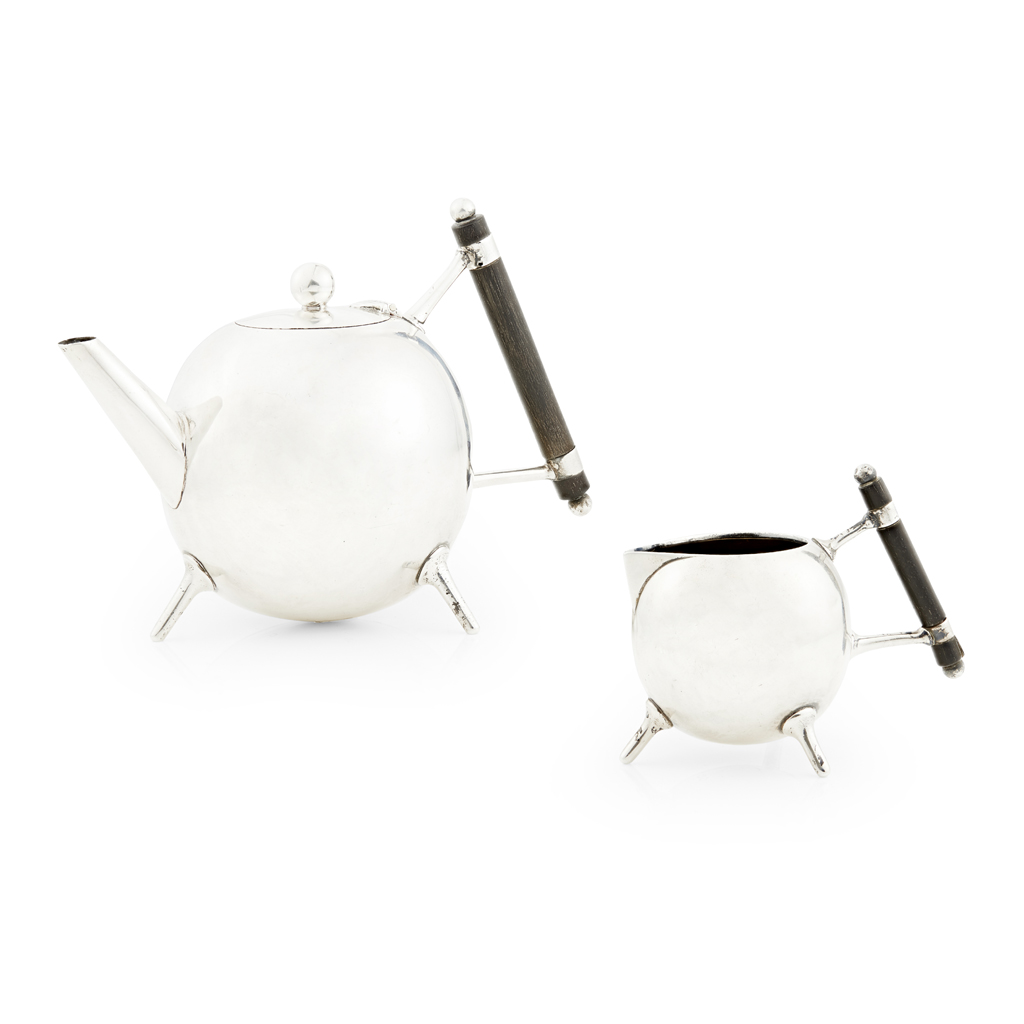CHRISTOPHER DRESSER (1834-1904) FOR ELKINGTON & CO., BIRMINGHAM
SILVER AND EBONY TWO-PIECE TEA SERVICE,1882
£7,500
Decorative Arts: Design Since 1860
Auction: 11 April 2018 at 12:00 BST
Description
comprising a TEAPOT, of sphere form, with ebony handle, raised on three tapered feet supports, 15cm high; and a MILK JUG, also of sphere form, with ebony handle and raised on three tapered feet supports, 8.5cm high, each with engraved cipher to one side and bearing stamped maker's marks to base FE (Frederick Elkington or Elkington & Co.), and hallmarks for London 1882 (2)
Footnote
Literature: Halén, Widar 'Christopher Dresser: A Pioneer of Modern Design', London, 1993, p. 146 and p. 148, fig. 166 for an illustration of a similar silver teapot dated 1885.
Whiteway, Michael 'Christopher Dresser, Skira 2001, p. 162 and p. 171, fig. 206
Exhibition catalogue, 'Truth, Beauty, Power: Dr. Christopher Dresser 1834-1904, New York', Historical Design, 1998, p. 55
Lyons, Harry 'Christopher Dresser: The People's Designer', Woodbridge 2005, p.192, pl. 363.
Note: Dresser was associated with Elkington from about 1865-1890, and, apart from the series of famous designs he produced for the firm in the 1880s, was also employed in an advisory capacity with their experiments in Japanese techniques such as cloisonné enamel and Komai Ware. His designs for the firm in the 1880s were inspired by the Japanese teapots and other cooking vessels which he would have admired on his famous trip to Japan in 1876-77 but also the metal wares that were being imported and exhibited in Europe in the 1870s. Dresser reviewed the Japanese section of the Vienna International Exhibition of 1873 and commented that "While the kettle is an object of use in every house in the land, we have to go to Japan to learn how to make one as it should be". The "square kettles and round kettles and polyhydric kettles" will have inspired him and the "breadth of treatment, simplicity of execution, and boldness of design" of the objects which he saw there and in Japan later on are reflected in the simplicity of line and undecorated nature of the famous designs he produced for Elkington's, Hukin & Heath and James Dixon at this time. The present example, shape 16611, is entered as July 1881 in the V&A archive and is identical to the set registered in 1880 by James Dixon of Sheffield (shape 2278).

